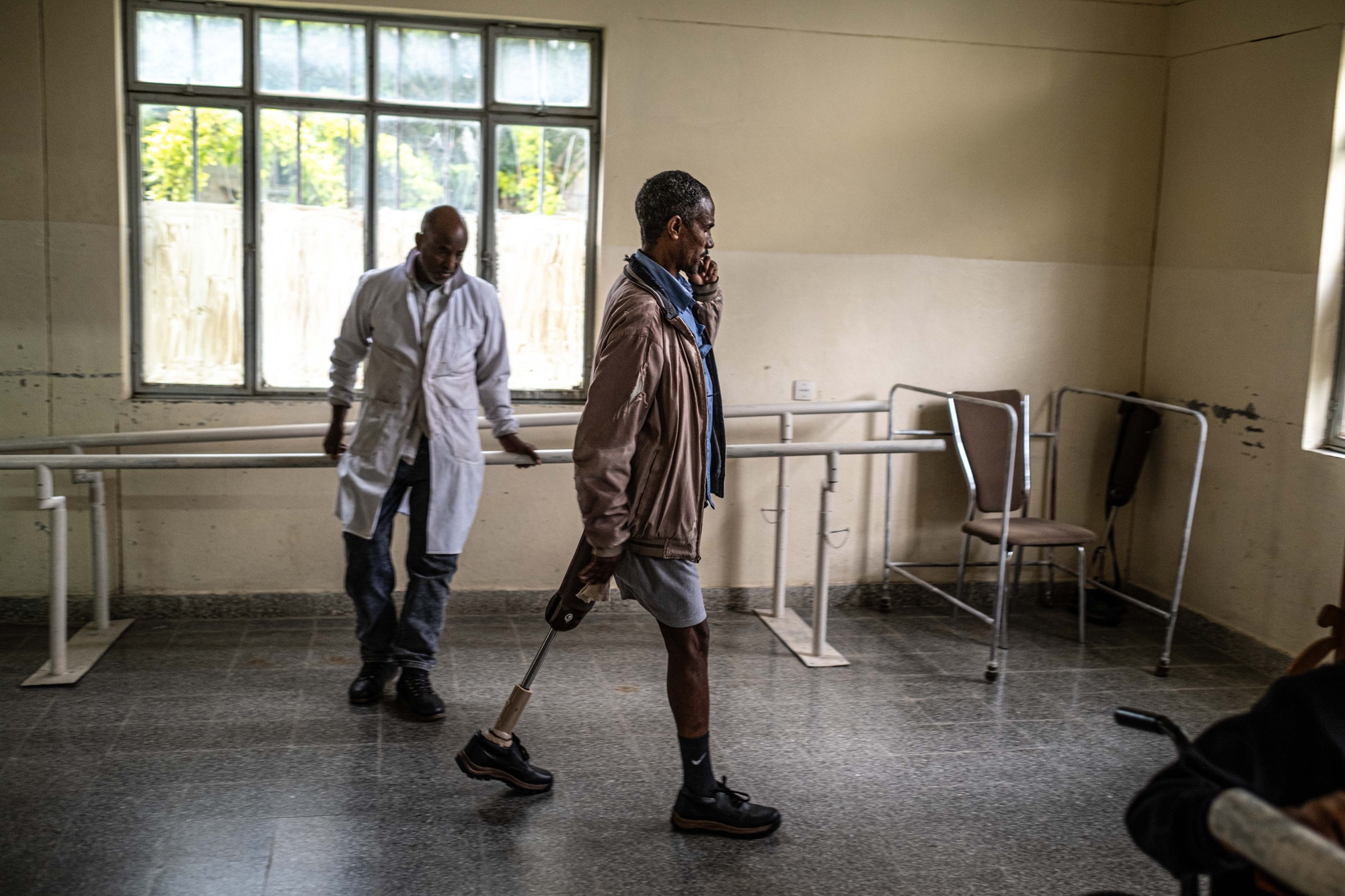Ethiopia 2024 – Al Jazeera, Mediapart, Afrique XXI, Africa Rivista, Nigrizia
“I was walking to the market when I heard an airplane noise and soon after everything exploded near me. When I woke up I saw that I was severely injured in one leg” Kahasay Berhanu, 19, is a victim of a drone bombing that occurred in November 2021 in southern Tigray. The boy was unable to reach a hospital in time due to insecurity and lost his leg.
He hopes to return to school now that he is learning to walk with a prosthesis along with other patients within the Mekelle orthopedic physiotherapy center (MOPC). Most of them are war victims like him. There are former TPLF soldiers, but also and especially many civilians injured by shelling, mortar and gunshot wounds. At the end of the conflict there was a waiting list to receive the prosthesis of more than 2,500 people, which has since increased.
This report starts here. From the stories of war wounded who are now trying to turn the page as the whole region two years after the end of the conflict (November 2022) which caused hundreds of thousands of deaths and injuries as well as displacing 3 million people.
During the conflict, much of the region has been cut off from food and medicine, and most hospitals and much infrastructures suffered extensive damage and pillaging. The reconstruction bill has been estimated at $20 billion.
Mekelle and major Tigrinya urban centers such as Shire, social and economic life are slowly recovering. But the wounds of war, which led to widespread human rights violations and sexual violence, are difficult to heal.
The most obvious sign are the IDP camps established inside many schools on the outskirts of cities. There are 950,000 IDP’s currently in Tigray. “I still remember the day the Amhara militiamen burned our houses and we ran away to get here. We cannot come back because they are still there,” says Mebrahtu Tesfay who lives with his family in a refugee camp just outside Mekelle. Effectively, Eritrean troops and Amhara militias (FANO) have not yet fully withdrawn from the north-western and southern parts of Tigray, despite violating the Pretoria Peace Agreement.
In addition to the IDPs conditions, the region faces a severe food crisis that is still ongoing for which several alerts have been raised by the UN. The blockage of agricultural activities, coupled with a severe drought caused by the climate crisis have brought the population and the displaced people to their knees.
Even those who have managed to return to their land after peace are not having an easy time: “We had to start from scratch because they had stolen everything from us: food, livestock, and even tools. I survived with my family but we starved. Now that we see the rains we hope to get back on our feet,” explains old Alene Berhe, a farmer from a village in the mountains northeast of Shire.
Reconciliation and reconstruction are proceeding as Ethiopia grapples with an economic crisis and new regional divisions. The two largest regions, Oromia and Amhara, are already plagued by violent internal conflicts.
In addition, right now Tigray is facing internal unrest as its leaders struggle for control of the ruling party, the Tigray People’s Liberation Front (TPLF). All this is slowing down the process and could lead to new tensions.

































